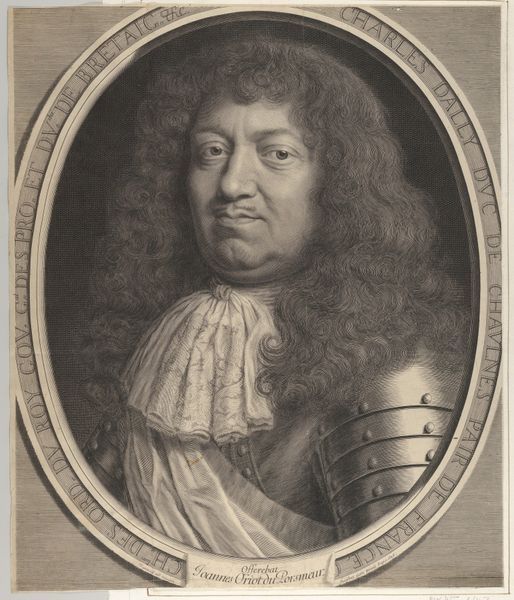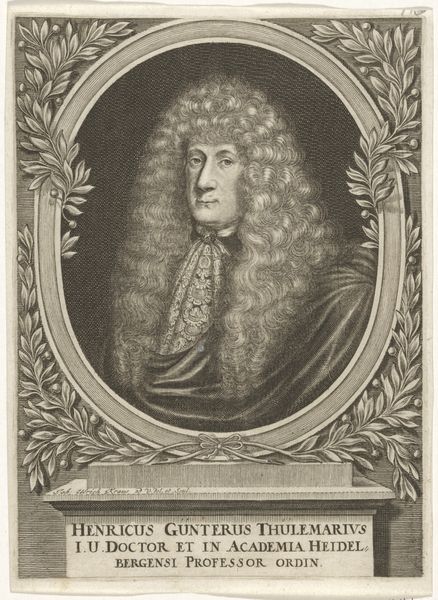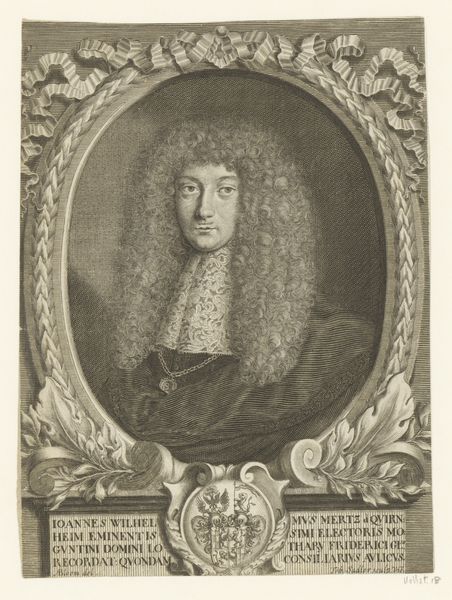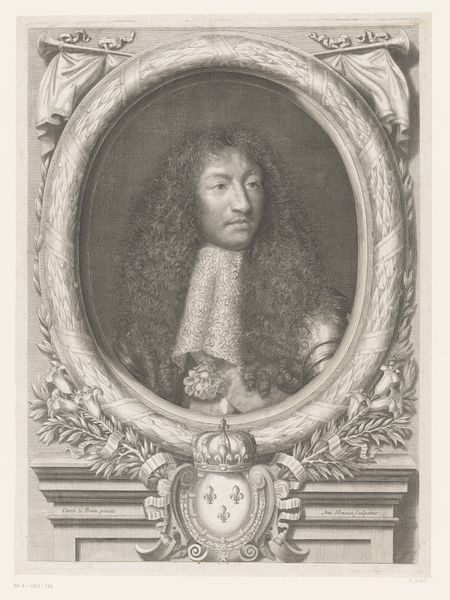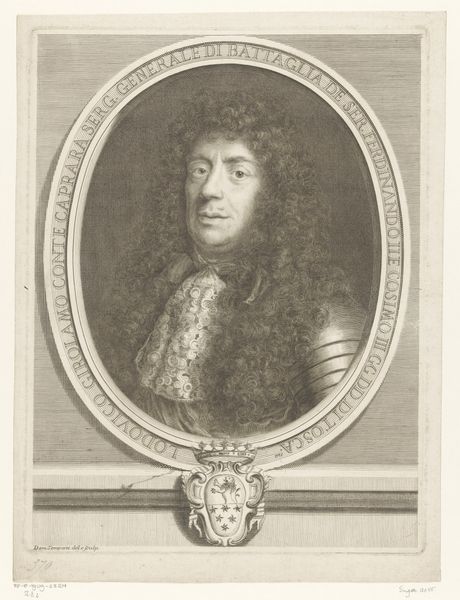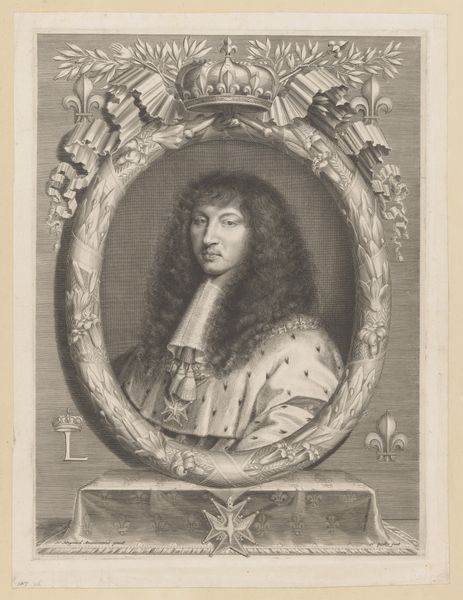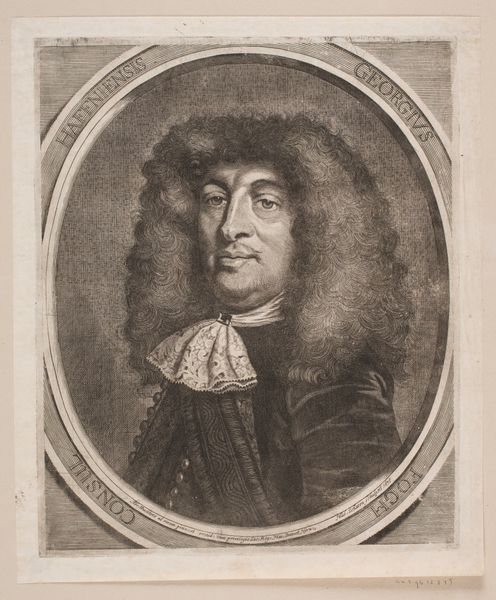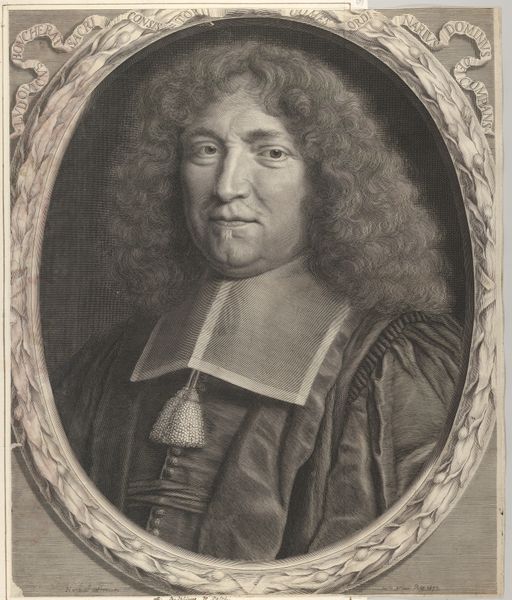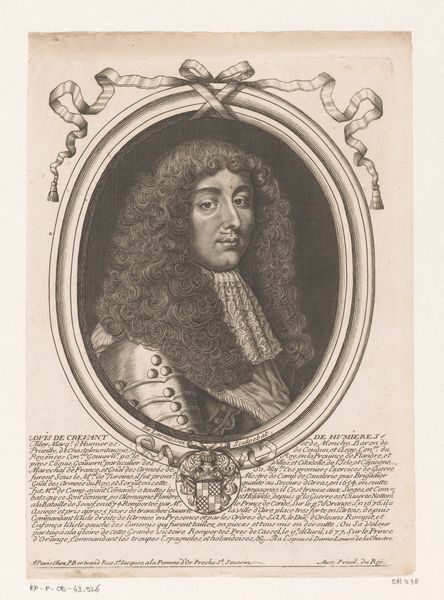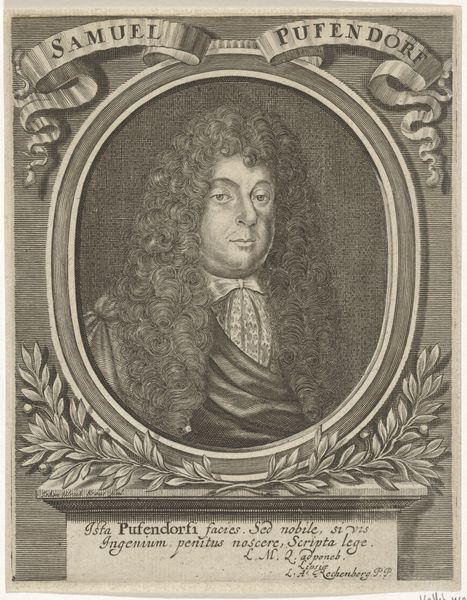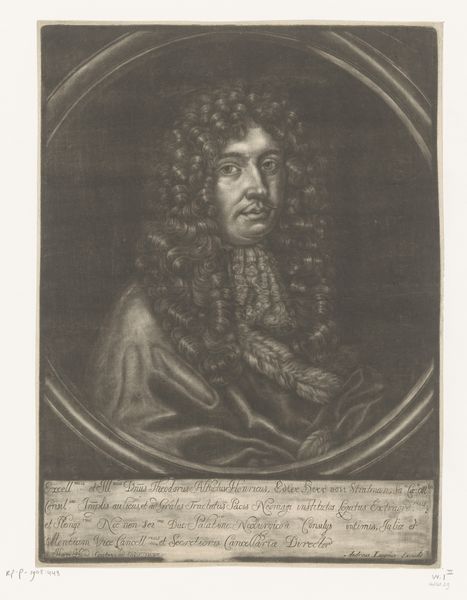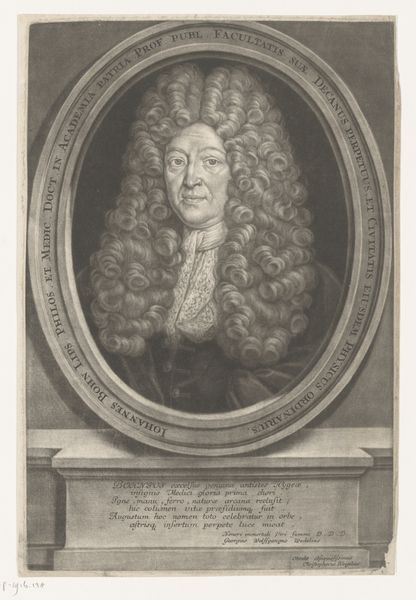
drawing, print, engraving
#
portrait
#
drawing
#
baroque
# print
#
engraving
Dimensions: Sheet: 17 7/8 × 14 13/16 in. (45.4 × 37.6 cm)
Copyright: Public Domain
Editor: This is Robert Nanteuil's engraving of Jean-Frédéric de Brunswick-Lunebourg, created sometime between 1635 and 1678. It's striking how the ornate details, especially in the wig and clothing, contrast with Jean-Frédéric's somewhat melancholic expression. What strikes you about this portrait? Curator: What's interesting to me is how prints like this circulated. They weren't just decorative; they were powerful tools for image making and social networking in the 17th century. Who controlled the distribution of this image, and what message were they trying to convey about Jean-Frédéric? Think about the role of the engraver versus the sitter; who is shaping public perception here? Editor: That’s a great point, I hadn't considered its distribution. The image feels very controlled and stately, and I suppose that aligns with how powerful figures wanted to be seen. Did Nanteuil have much creative freedom, or was he more of a technician translating an existing image? Curator: Good question. Nanteuil was highly regarded as a portrait engraver. Patrons sought him out. His style shaped expectations for aristocratic portraiture. This points to the complex relationship between artistic skill, patronage, and the construction of power. To what extent is this portrait a reflection of the man versus the image he and his circle wished to project? Editor: So it's a collaboration of sorts, with the engraver's skill serving a specific political and social function? Curator: Precisely! It shows how artistic choices reflected and reinforced social hierarchies. These images offer glimpses into the power dynamics of the time, even through seemingly straightforward portraiture. Editor: This really changes how I see the print. It's not just a likeness, but a carefully constructed piece of political messaging. Curator: Exactly! Looking closely at the images of power is important because it reveals a lot about the social environment that produces them.
Comments
No comments
Be the first to comment and join the conversation on the ultimate creative platform.
